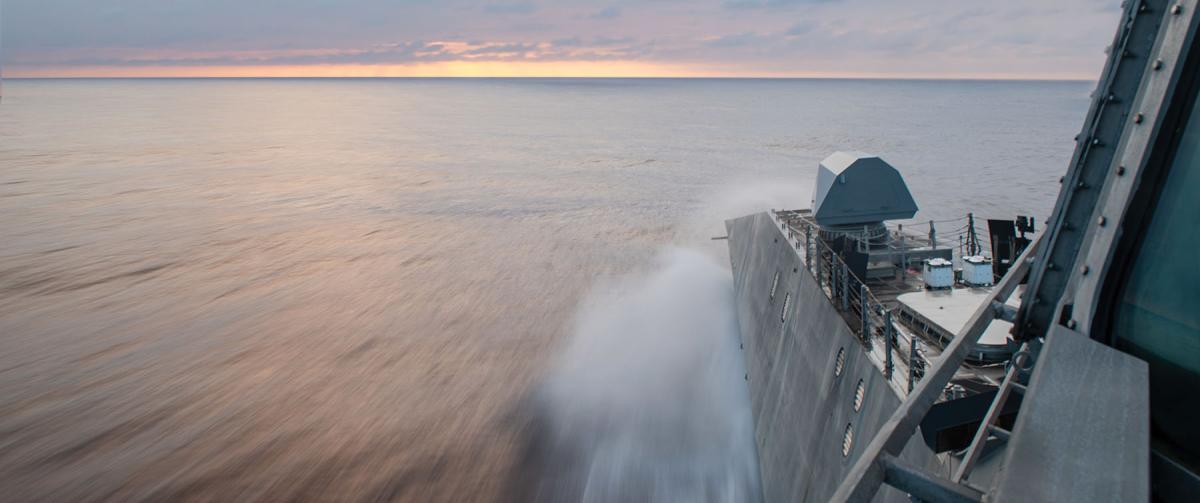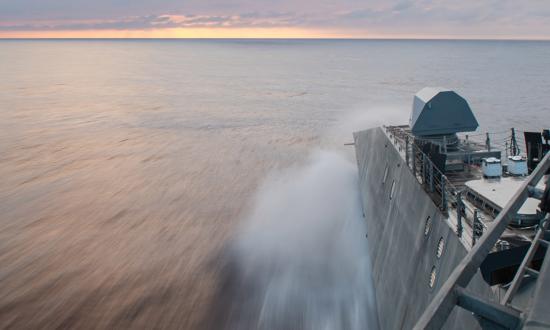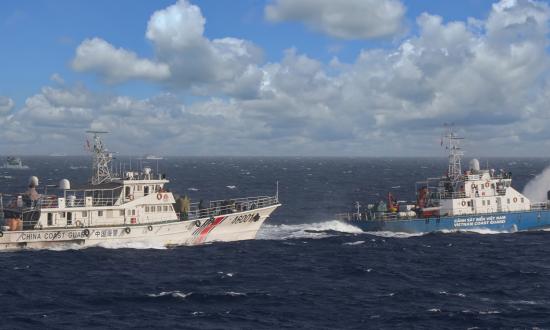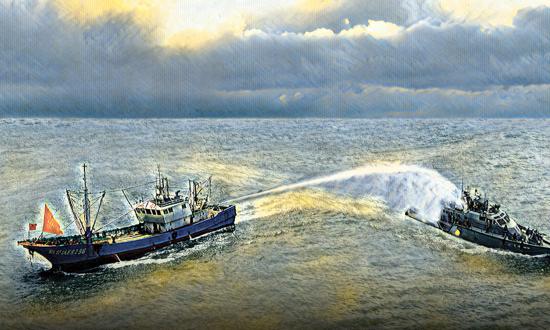It has been a year since the July 2022 launch of the Maritime Counterinsurgency Project. To date, the project has produced some noteworthy responses.
Chinese experts apparently view the Maritime COIN Project through a similar lens as official U.S. strategic documents. In its coverage of the project launch, the South China Morning Post cited a Beijing-based international law expert who remarked, “Whether it was the USNI’s ‘maritime counter-insurgency project’ or the White House’s Indo-Pacific Strategy, the Americans were clearly studying how semi-military countermeasures could effectively contain a rising and aggressive China, while looking to avoid all-out armed conflict between the two rival powers.” Responding in the Chinese-language edition of the state-run tabloid Global Times, Hu Bo, director of China’s South China Sea Probing Initiative and one of China’s foremost South China Sea scholars, acknowledges the Naval Institute’s independent status but nevertheless urges readers to regard the Maritime COIN Project and its contributors as “representative of the official attitude of the United States.”
Chinese strategists expressed concern that the approach the project advocates could create problems for China’s campaign in the South China Sea. The South China Morning Post quoted Zhang Mingliang, South China Sea specialist at Jinan University in Guangzhou:
Such a U.S.-led regional framework was likely to restrict Chinese coast guard and maritime militia’s operations in the area. . . . Once the U.S.-led regional maritime enforcing mechanism is built, it will pose a great threat. . . . China’s coast guard and maritime militia forces are much stronger and more capable than their counterparts in Southeast Asian countries. But those weak and disorganized regional maritime forces can become a powerful and unified enforcing mechanism if the Americans come to lead them.1
Leading Chinese experts apparently embrace the project’s framing but attempt to flip the script. Hu Bo adopts the terminology of maritime COIN (which he refers to as “the logic of the United States”), yet tries to position China as the incumbent, arguing that “it is the United States that is instigating the insurgency in the South China Sea, and China is the one that should counter the insurgency.”2
China has also mobilized some of its English-language propaganda resources to discourage the United States and its allies from adopting a maritime COIN strategy. The Asia Times published op-eds by Mark Valencia, an affiliate of China’s National Institute for South China Sea Studies (which the Geopolitical Monitor says “works under the guidance of the Chinese Foreign Ministry”), attacking the project and Brent Sadler’s recommendations on naval statecraft, in particular, as a form of “gunboat diplomacy.”3
Reactions have been positive among U.S. regional partners, including the Philippines, Vietnam, and Taiwan.4 Multiple outlets reported on the launch, including Taiwan’s first and third largest newspapers.5 The Taipei Times referenced the project’s work as part of its coverage of then–House Speaker Nancy Pelosi’s August 2022 visit.6 Leaders of the Taiwan National Security Association cited the project as a sign the U.S. Navy “has begun shifting its focus on improving its gray-zone capabilities in collaboration with its allies.”7
The project’s ideas continue to gain traction in official and academic U.S. circles and have been featured at public events at the Naval War College, CSIS, and elsewhere. In April, maritime COIN was a focus of a panel at the Navy League’s Sea-Air-Space symposium featuring Deputy Assistant Secretary of State Camille Dawson, Dr. James Holmes, Navy Vice Admiral Eugene Black, Coast Guard Vice Admiral Andrew Tiongson, and Marine Corps Brigadier General Simon Doran, who commented about the utility of Marine Corps stand-in forces in countering China’s maritime insurgency.
1. Minnie Chan, "South China Sea: US-led Southeast Asian Strategy to Contain Beijing Would 'Complicate' Disputes, Chinese Experts Warn," South China Morning Post, 9 July 2022.
2. Hu Bo, "胡波:域外国家莫要在南海给自己强行加戏—评论—环球网," Global Times, 13 July 2022.
3. Mark Valencia, "More U.S. Gunboat Diplomacy Would Just Make Things Worse," Asia Times, 4 July 2022; and Bich Tran and James Borton, "China Enlists Academics in South China Sea Propaganda War," Geopolitical Monitor, 20 March 2020.
4. Xue Xiaoshan, "中国在南中国海"扮海盗、搞叛乱"?美学者发起"海上平叛项目"反制," Voice of America Chinese, 10 July 2022. "Countering Gray Zone Operations in the Maritime Indo-Pacific," Stratbase ADR Institute, Manila, 8 March 2023. "Bắc Kinh dọa 'kềm chế Trung Quốc' là gây phức tạp tranh chấp Biển Đông," Người Việt, 11 July 2022.
5. Mao Yi, "海上平叛 增強美對中嚇阻力," ("Counterinsurgency at Sea Strengthens U.S. Deterrence against China"), Liberty Times, 12 July 2022, and Lu Bohua, "美海事專家針對中國在南海強勢作為發起海上平叛項目," China Times, 11 July 2022, and Hong Cuilian, "中國在南海扮海盜掠奪 美民間自保啟動海上平叛," Newtalk Taiwan, 11 July 2022.
6. "Pelosi in Taiwan: Statebuilding Party Urges Coast Guard Partnership with US," Ke Yu-hao and Jonathan Chin, Taipei Times, 3 August 2022.
7. Huang Yimei, "美学者发起"海上平叛" 反制中共霸权扩张," NTDTV, 12 July 2022.







